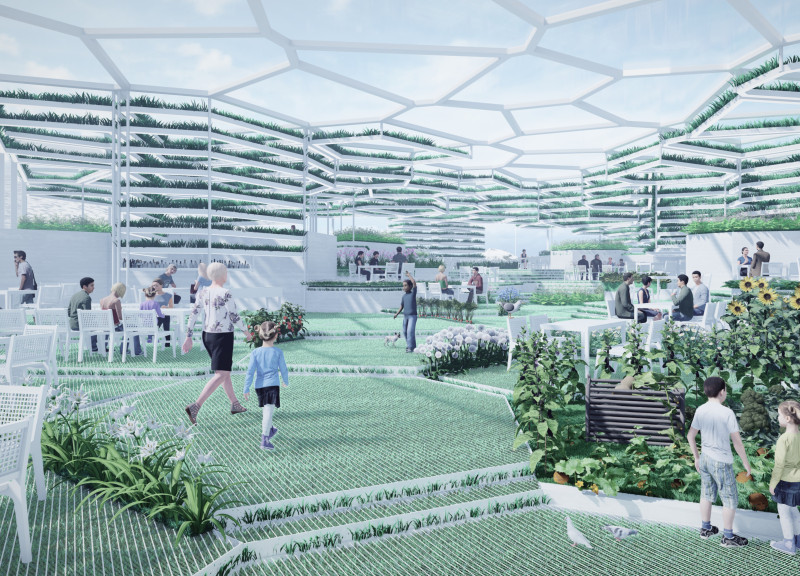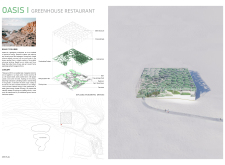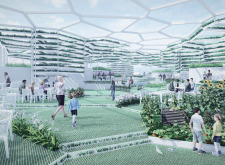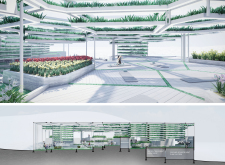5 key facts about this project
The project utilizes a series of hexagonal configurations that not only mimic the local basalt columns but also enhance light penetration and spatial fluidity. This unique form facilitates multifunctional spaces within the restaurant, allowing for both casual dining and event hosting.
Sustainability is a core tenet of the design. The building employs a steel frame structure that supports an array of polycarbonate panels, optimizing natural lighting and thermal efficiency. Hydroponic farming systems are integrated into the restaurant, enabling diners to observe the cultivation of fresh produce, further enhancing the connection to food sources. The use of local basalt stone ties the structure to its geological context, ensuring that the building complements the surrounding landscape and maintains structural integrity.
One of the distinguishing features of the Oasis Greenhouse Restaurant is its emphasis on community engagement and educational opportunities. The facility is designed to host workshops on sustainable farming practices, emphasizing the importance of local sourcing and food production. Furthermore, the incorporation of agricultural elements extends beyond aesthetic appeal; it aims to foster an understanding of environmental stewardship among patrons.
Architectural details such as the interior layout are meticulously planned to create distinct zones. These include multipurpose halls, dining areas overlooking hydroponic installations, and kitchen facilities that prioritize efficiency. The integration of landscapes surrounding the restaurant serves both functional and visual roles, blending agricultural space with the natural environment.
In summary, the Oasis Greenhouse Restaurant presents a cohesive and practical architectural solution that addresses both contemporary dining needs and sustainable practices. For more detailed insights into the intricacies of this project, including architectural plans, sections, and designs, it is encouraged to explore the full project presentation for a comprehensive understanding of its features and design ideologies.


























